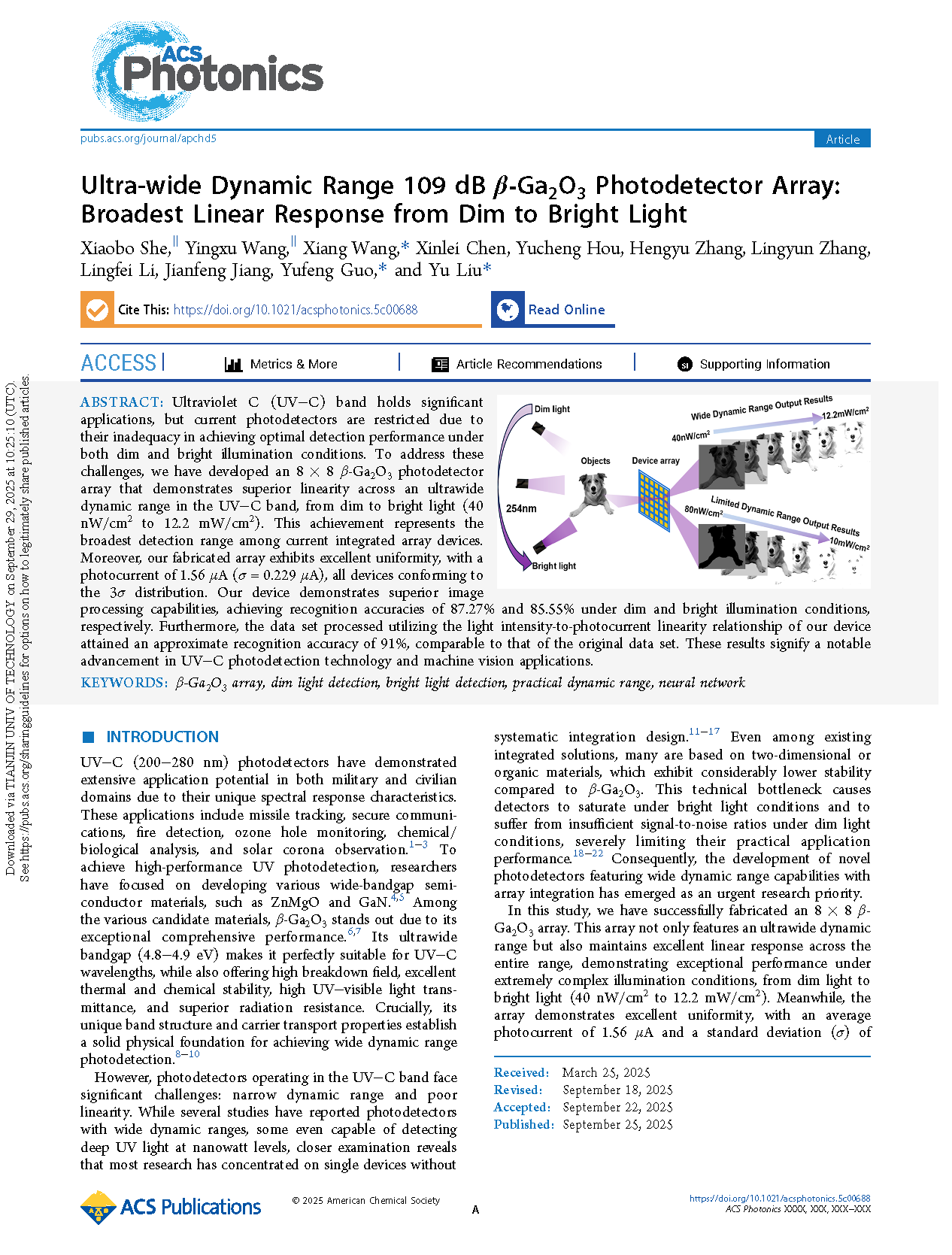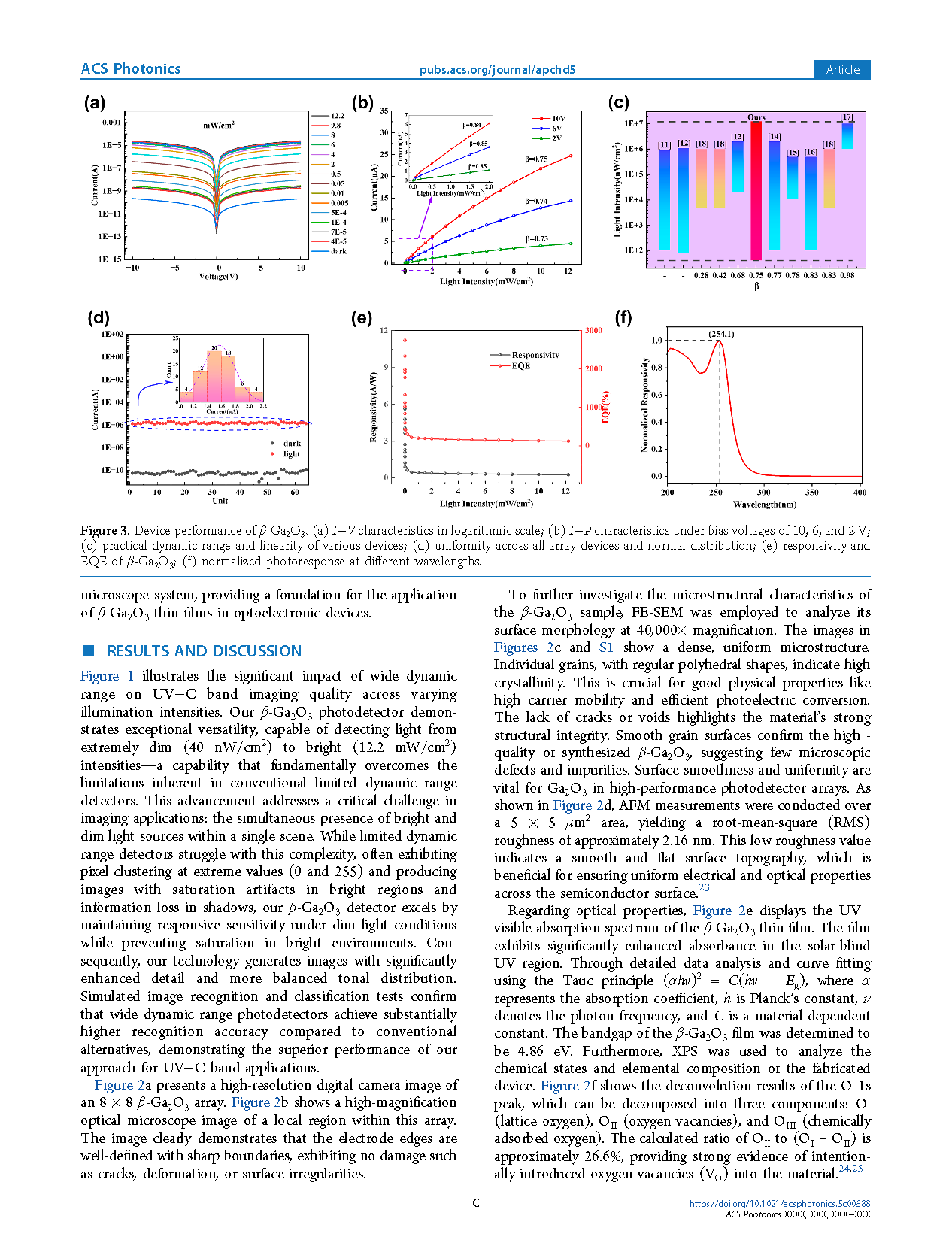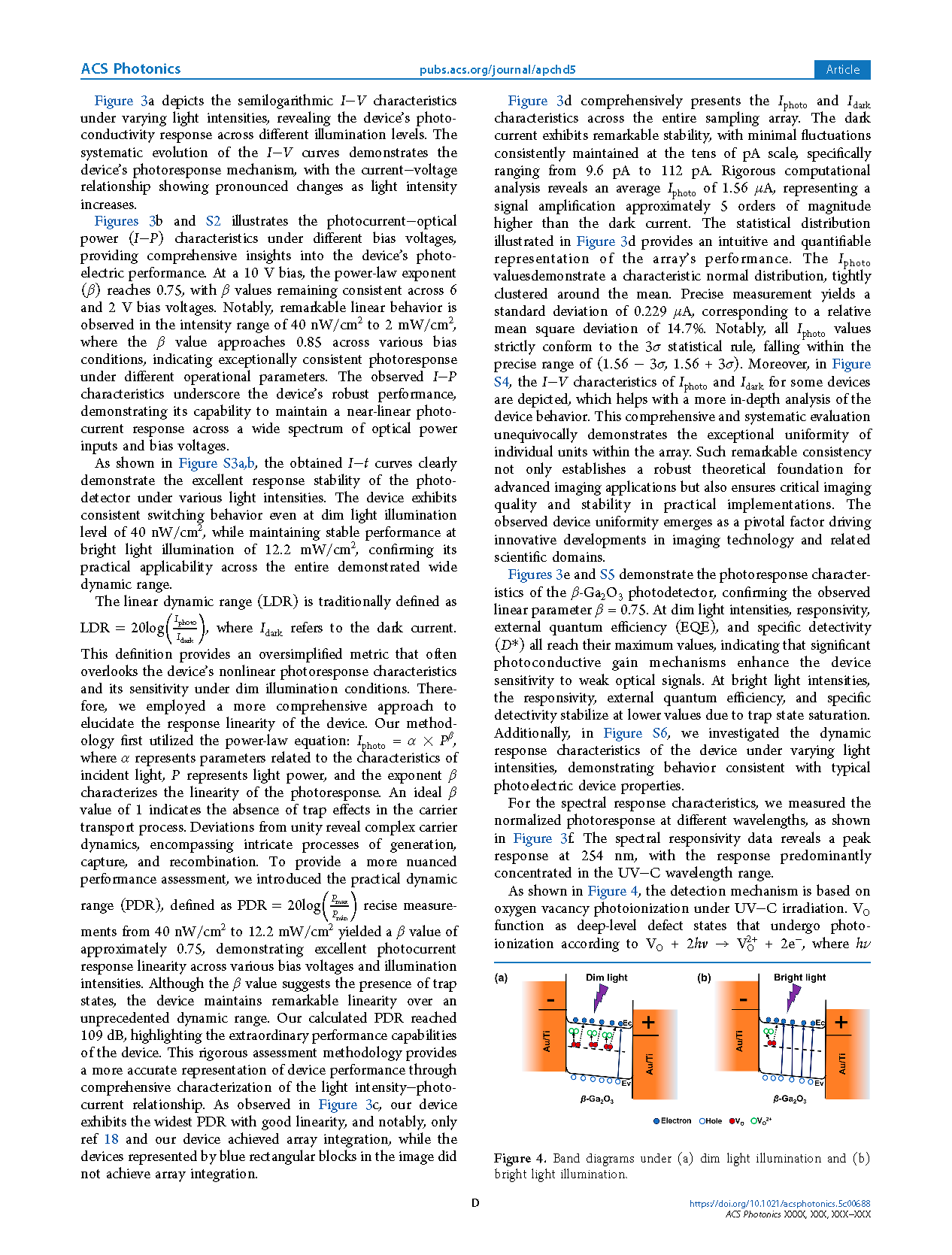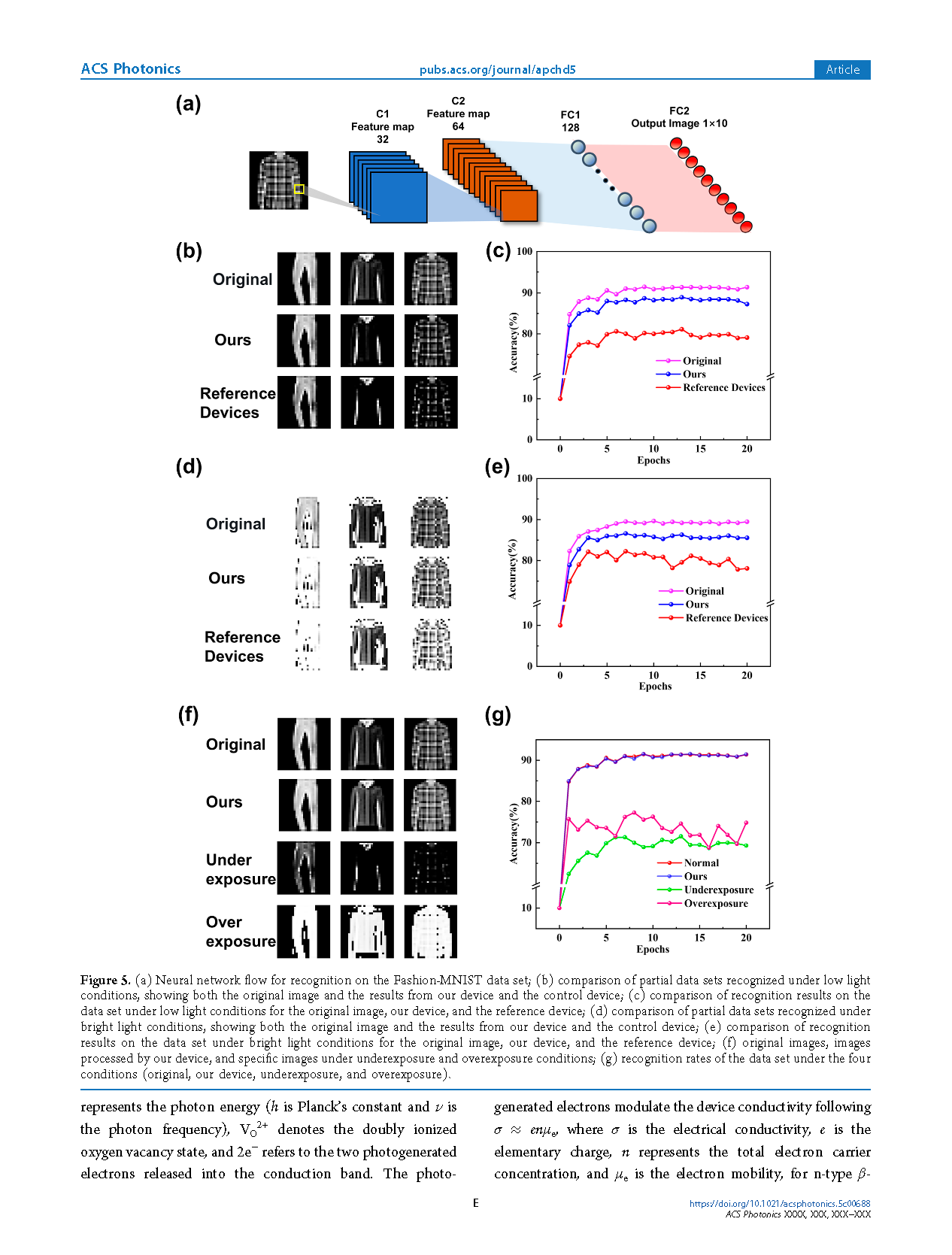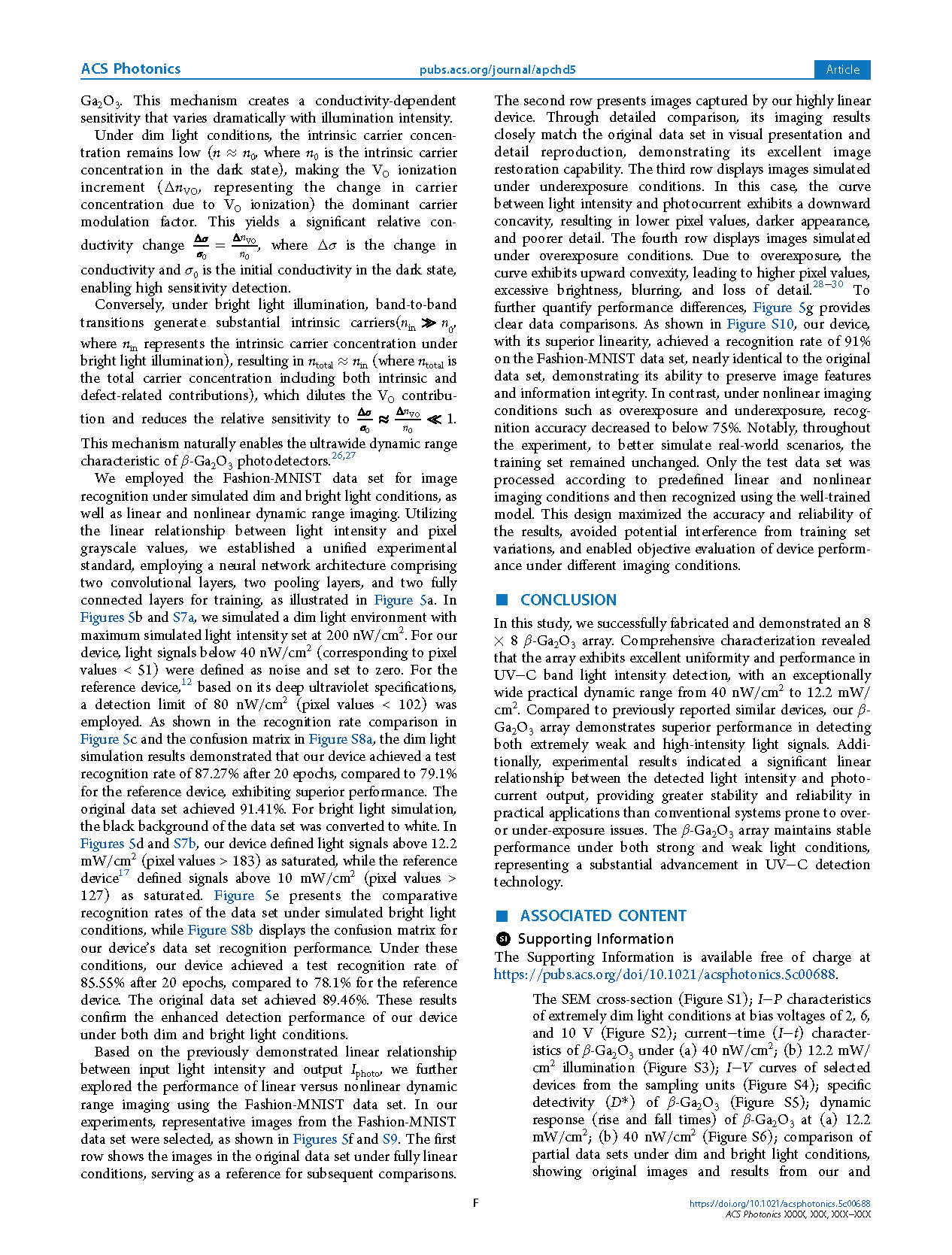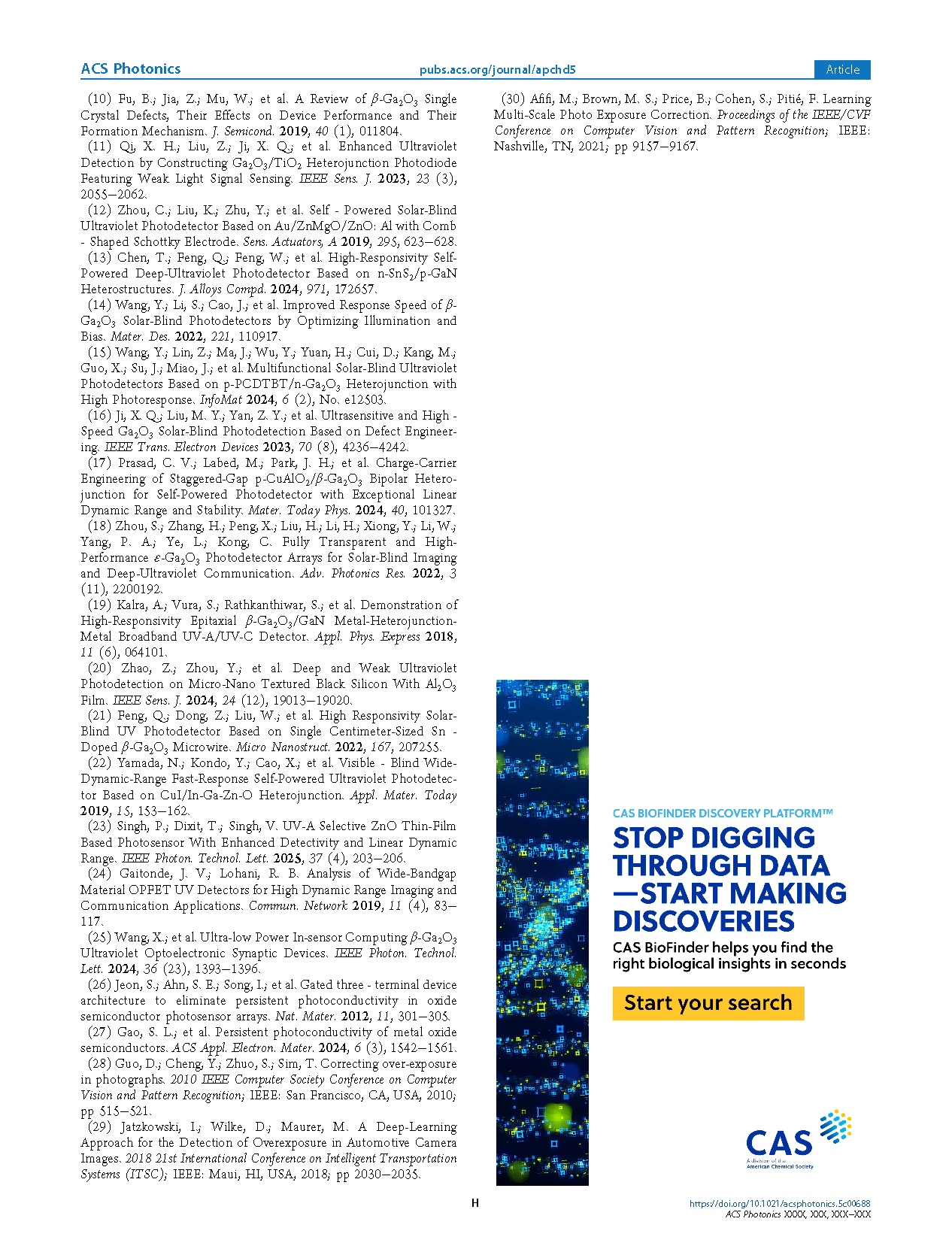

【Member Papers】Ultra-wide Dynamic Range 109 dB β-Ga₂O₃ Photodetector Array: Broadest Linear Response from Dim to Bright Light
日期:2025-10-24阅读:175
Researchers from the Nanjing University of Posts and Telecommunications have published a dissertation titled "Ultra-wide Dynamic Range 109 dB β-Ga2O3 Photodetector Array: Broadest Linear Response from Dim to Bright Light" in ACS Photonics.
Project Support
This work was supported in part by the National Natural Science Foundation of China (grant nos. 62401276, U23B2042), Natural Science Research Start-up Foundation of Recruiting Talents of Nanjing University of Posts and Telecommunications (Grant No. NY223161) and in part by the Jiangsu Provincial Key Research and Development Program under Grant BE2022126.
Background
UV−C (200−280 nm) photodetectors have demonstrated extensive application potential in both military and civilian domains due to their unique spectral response characteristics. These applications include missile tracking, secure communications, fire detection, ozone hole monitoring, chemical/ biological analysis, and solar corona observation. To achieve high-performance UV photodetection, researchers have focused on developing various wide-bandgap semiconductor materials, such as ZnMgO and GaN. Among the various candidate materials, β-Ga2O3 stands out due to its exceptional comprehensive performance. Its ultrawide bandgap (4.8−4.9 eV) makes it perfectly suitable for UV−C wavelengths, while also offering high breakdown field, excellent thermal and chemical stability, high UV−visible light transmittance, and superior radiation resistance. Crucially, its unique band structure and carrier transport properties establish a solid physical foundation for achieving wide dynamic range photodetection.
Abstract
Ultraviolet C (UV–C) band holds significant applications, but current photodetectors are restricted due to their inadequacy in achieving optimal detection performance under both dim and bright illumination conditions. To address these challenges, we have developed an 8 × 8 β-Ga2O3 photodetector array that demonstrates superior linearity across an ultrawide dynamic range in the UV–C band, from dim to bright light (40 nW/cm2 to 12.2 mW/cm2). This achievement represents the broadest detection range among current integrated array devices. Moreover, our fabricated array exhibits excellent uniformity, with a photocurrent of 1.56 μA (σ = 0.229 μA), all devices conforming to the 3σ distribution. Our device demonstrates superior image processing capabilities, achieving recognition accuracies of 87.27% and 85.55% under dim and bright illumination conditions, respectively. Furthermore, the data set processed utilizing the light intensity-to-photocurrent linearity relationship of our device attained an approximate recognition accuracy of 91%, comparable to that of the original data set. These results signify a notable advancement in UV–C photodetection technology and machine vision applications.
Conclusion
In this study, we successfully fabricated and demonstrated an 8 × 8 β-Ga2O3 array. Comprehensive characterization revealed that the array exhibits excellent uniformity and performance in UV−C band light intensity detection, with an exceptionally wide practical dynamic range from 40 nW/cm2 to 12.2 mW/ cm2. Compared to previously reported similar devices, our β-Ga2O3 array demonstrates superior performance in detecting both extremely weak and high-intensity light signals. Additionally, experimental results indicated a significant linear relationship between the detected light intensity and photocurrent output, providing greater stability and reliability in practical applications than conventional systems prone to over-or under-exposure issues. The β-Ga2O3 array maintains stable performance under both strong and weak light conditions, representing a substantial advancement in UV−C detection technology.

Figure 1. Demonstration of image recognition and classification performance based on UV−C photodetectors with different dynamic ranges.
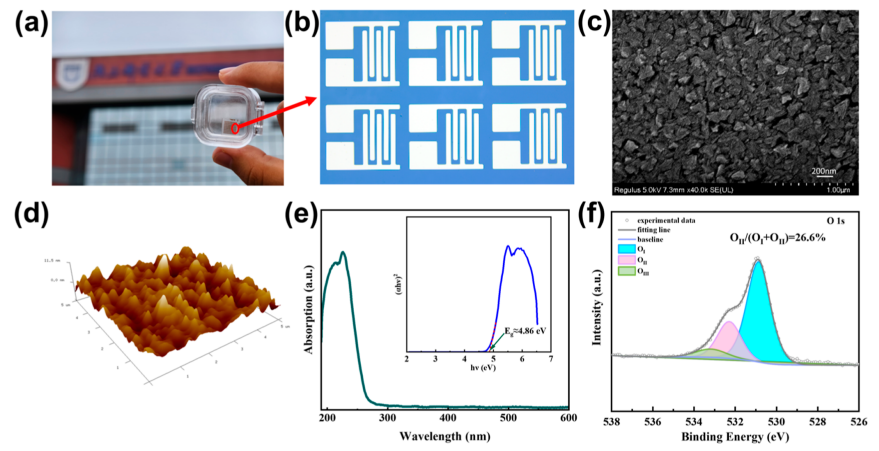
Figure 2. Characterization and structure of the device. (a) Photograph of the β-Ga2O3 thin film; (b) high-magnification optical microscope image of a localized region; (c) SEM pattern; (d) AFM image; (e) UV−visible absorption spectrum; (f) XPS spectrum of the device.
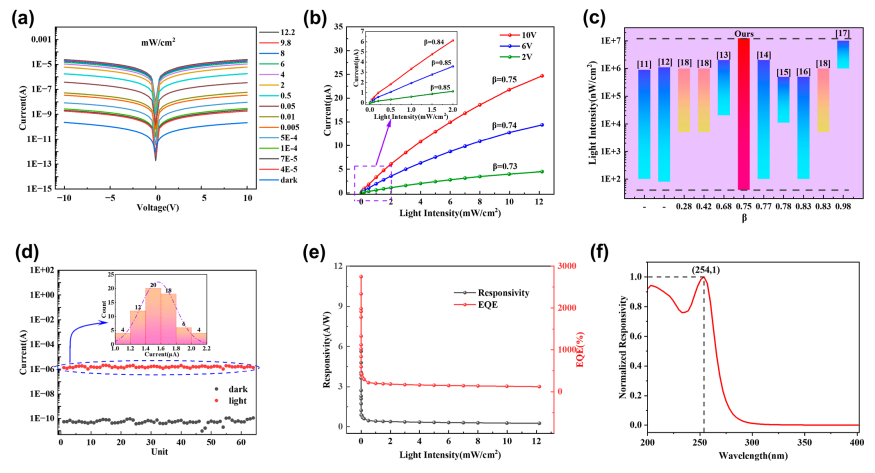
Figure 3. Device performance of β-Ga2O3. (a) I−V characteristics in logarithmic scale; (b) I−P characteristics under bias voltages of 10, 6, and 2 V; (c) practical dynamic range and linearity of various devices; (d) uniformity across all array devices and normal distribution; (e) responsivity and EQE of β-Ga2O3; (f) normalized photoresponse at different wavelengths.
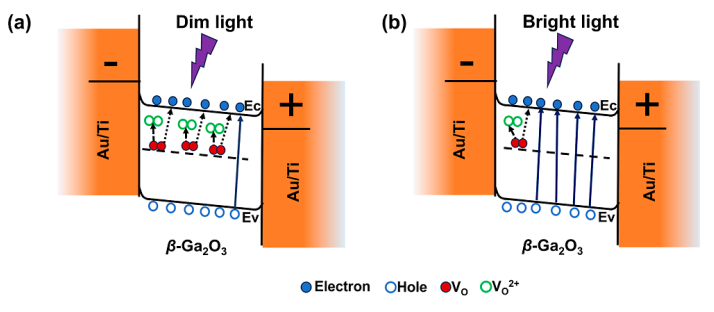
Figure 4. Band diagrams under (a) dim light illumination and (b) bright light illumination.
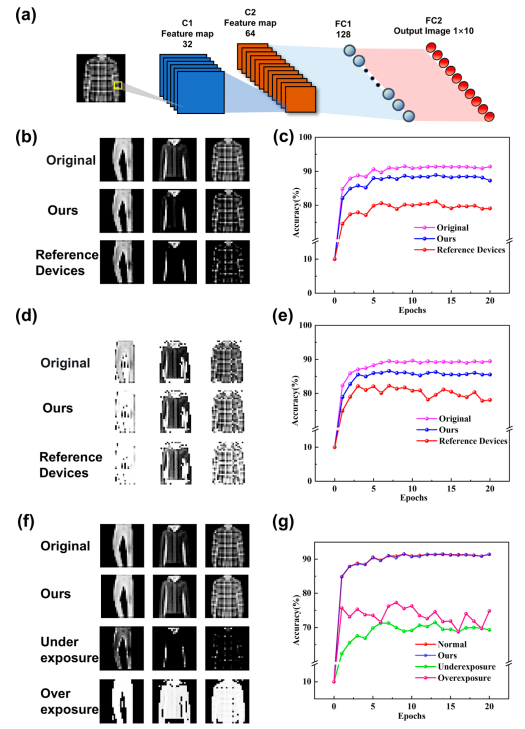
Figure 5. (a) Neural network flow for recognition on the Fashion-MNIST data set; (b) comparison of partial data sets recognized under low light conditions, showing both the original image and the results from our device and the control device; (c) comparison of recognition results on the data set under low light conditions for the original image, our device, and the reference device; (d) comparison of partial data sets recognized under bright light conditions, showing both the original image and the results from our device and the control device; (e) comparison of recognition results on the data set under bright light conditions for the original image, our device, and the reference device; (f) original images, images processed by our device, and specific images under underexposure and overexposure conditions; (g) recognition rates of the data set under the four conditions (original, our device, underexposure, and overexposure).
DOI:
doi.org/10.1021/acsphotonics.5c00688
